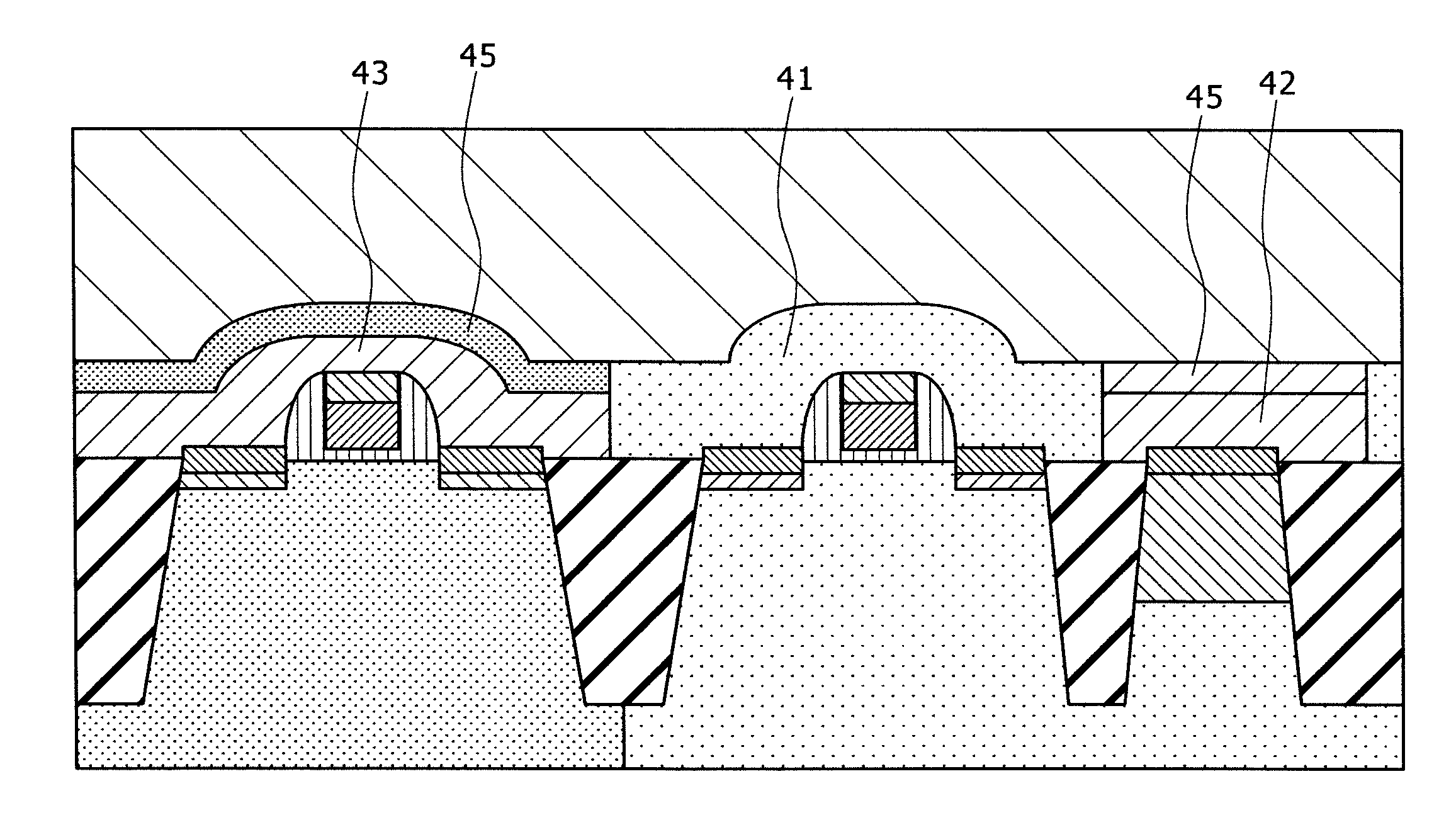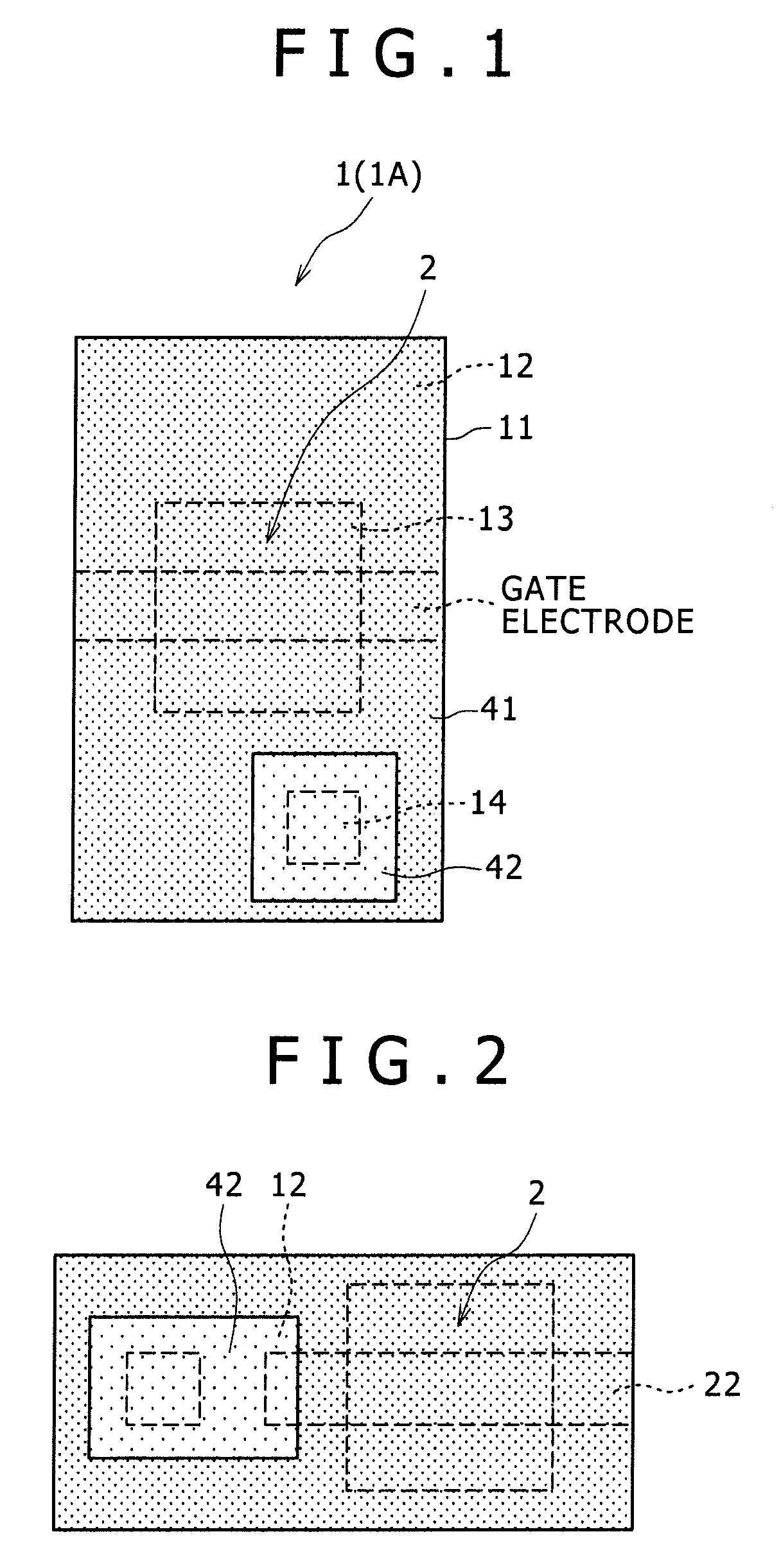Semiconductor device and method for manufacturing same
a technology of semiconductors and semiconductors, applied in the direction of semiconductor devices, bulk negative resistance effect devices, electrical appliances, etc., can solve the problems of deteriorating the adhesion between nickel and nickel, becoming impossible to achieve enhanced performance,
- Summary
- Abstract
- Description
- Claims
- Application Information
AI Technical Summary
Benefits of technology
Problems solved by technology
Method used
Image
Examples
first embodiment
[0035]A semiconductor device according to one embodiment (first embodiment) of the present invention will be described below with reference to a layout plane view of FIG. 1.
[0036]As shown in FIG. 1, by an element isolation region 12 formed in a semiconductor substrate 11, a first element formation region 13 as the formation region of a P-type field effect transistor 2 and an N-type substrate region 14 serving as a contact region are isolate from each other.
[0037]The P-type field effect transistor 2 is formed in the first element formation region 13. In the N-type substrate region 14, arsenic is ion-implanted to a deep position (e.g. to a position deeper than the source and drain regions of the transistor). On this N-type substrate region 14, a nickel silicide layer (not shown) is formed e.g. across the entire surface of the N-type substrate region 14. By this ion implantation, an N-type region is formed in the N-type substrate region 14.
[0038]Furthermore, over the P-type field effec...
second embodiment
[0043]A semiconductor device according to one embodiment (second embodiment) of the present invention will be described below with reference to a layout plane view of FIG. 3.
[0044]As shown in FIG. 3, by an element isolation region 12 formed in a semiconductor substrate 11, a first element formation region 13 as the formation region of a P-type field effect transistor 2, an N-type substrate region 14 serving as a contact region, a second element formation region 15 as the formation region of an N-type field effect transistor 3, and a P-type substrate region 16 serving as a contact region are isolate from each other.
[0045]The P-type field effect transistor 2 is formed in the first element formation region 13. In the N-type substrate region 14, arsenic is ion-implanted to a deep position (e.g. to a position deeper than the source and drain regions of the transistor). On this N-type substrate region 14, a nickel silicide layer (not shown) is formed e.g. across the entire surface of the ...
third embodiment
[0051]A semiconductor device according to one embodiment (third embodiment) of the present invention will be described below with reference to layout plane views of FIGS. 4 and 5. FIGS. 4 and 5 show one example of application to a semiconductor device that serves as a NAND circuit.
[0052]As shown in FIG. 4, by an element isolation region 12 formed in a semiconductor substrate 11, a first element formation region 13 as the formation region of a P-type field effect transistor 2, an N-type substrate region 14 serving as a contact region, a second element formation region 15 as the formation region of an N-type field effect transistor 3, and a P-type substrate region 16 serving as a contact region are isolate from each other.
[0053]In the first element formation region 13, two P-type field effect transistors 2 are formed as one example. In the regions of the respective sources and drains in the first element formation region 13, e.g. plural contacts 31, contacts 32, and contacts 33 are fo...
PUM
 Login to View More
Login to View More Abstract
Description
Claims
Application Information
 Login to View More
Login to View More - R&D
- Intellectual Property
- Life Sciences
- Materials
- Tech Scout
- Unparalleled Data Quality
- Higher Quality Content
- 60% Fewer Hallucinations
Browse by: Latest US Patents, China's latest patents, Technical Efficacy Thesaurus, Application Domain, Technology Topic, Popular Technical Reports.
© 2025 PatSnap. All rights reserved.Legal|Privacy policy|Modern Slavery Act Transparency Statement|Sitemap|About US| Contact US: help@patsnap.com



